There’s a marketing drive going on at Twinings, as Siân Harrington discovers
Tea is in Stephen Twining’s blood. “I can’t get up without a cup of tea,” he declares, reeling off a list of flavours he would typically drink during a day. As the 10th generation Twining in the tea business and only remaining family member in the 298-year-old company, he knew tea was his future at the tender age of eight.
“For a long time I didn’t think there were any other tea companies,” he says.
Fittingly, corporate relations director Stephen, who describes himself as a roving ambassador for the brand, is discussing it over tea at The Ritz - Twinings of course. And with October a key time in the market’s calendar, he is explaining the reasons behind a speciality tea segmentation appearing in supermarkets this month.
“There is a big fear factor when it comes to trying new flavours. A consumer may buy a tea like Lapsang Souchong, not like it, therefore think it is a bad investment for £2 and leave all speciality tea alone as a result. We have a big education job to do,” he says.
To understand consumers’ views about speciality teas, Andover-based R Twining & Co, which has been part of Associated British Foods since 1964, embarked on 18 months’ research. This included 5,000 interviews, in-home testing and shopper research. The result is the classification of Twinings’ offer into five segments: Classics, Light Classics, Aromatics, Twinings& and Twinings Reserve.
Each segment is distinguished by a colour code on the packaging. So Classics like English Breakfast and Assam are red, Light Classics like Darjeeling are green and Aromatics like Earl Grey are mauve. For the more adventurous, the Twinings& range is gold and features blends such as Pineapple and Rooibos. Then there is the dark green Reserves, limited edition loose-leaf tea with blends such as plum pudding Christmas Tea.
“By dividing them into clear groups we are helping to educate the consumer about the flavours,” says Stephen. “For example, Classics are traditional-tasting teas. If consumers like one blend they are likely to like another red colour tea.”
The initiative will be supported by advertising, including educational point of purchase material, instore magazine advertising and instore sampling - one of the best mechanics. “Putting tea in people’s hands is vital,” explains Stephen.
The move comes as tea brands face huge challenges, with the market down 2.1% in volume and 2.9% in value as our love affair with coffee continues (ACNielsen 52 w/e September 4). Mainstream, which covers everything from Yorkshire Gold to PG Tips, is by far the biggest sector but is entirely driven by promotions and is down 2.3% volume and 4.5% in value.
Meanwhile, green tea is up 23% in value. No wonder big brands are moving into a market traditionally owned by Twinings.
Growth is coming from three segments, says Stephen, and Twinings is market leader in all three. It has a 58% share of green tea with two brands, Twinings and Jacksons, both of which are growing 50% year on year. It also has a 58% share in infusions, with 11% year on year growth, while in speciality it has a 68% share in a segment which is up 7% year on year. Own label takes second place in speciality and infusions while Clipper comes next in green tea.
“It’s lucky because the areas of growth mean more margin for our sector. We are trying to ensure we are within these consumers’ repertoires,” says Stephen. “Growth is being driven by foreign travel and health. Today people are a little bit more adventurous than our parents’ generation. It’s like wine - it all started with Blue Nun and liebfraumilch, then people moved on to more adventurous tastes.”
The wine analogy is fitting: Stephen says the reason the company is still going is its simple philosophy based around the blending of fine, quality teas. “Tea is like wine,” he adds. “The soil, altitude and weather conditions give tea its flavour. Black tea is like red wine, green is white.”
The company, a founding member of the Tea Sourcing Partnership, does not own plantations; rather, a team of eight buyers and blenders source from wherever the best tea is available at any one time.
This stems from the company’s origins when Thomas Twining purchased Tom’s Coffee House of The Strand, London in 1706. Unusually, the menu included fine teas and back then a lady would never go into a coffee house so her sedan would pull over and the tea would be brought out.
When a neighbouring property became available Thomas acquired it and it remains a Twinings shop today. His son Daniel took over in 1741 and began to export tea to over 115 countries. On his death, his wife Mary Little ran the business and nine years later her son Richard Twining took over. The big problem was the high import duty.
“There was a lot of smuggling and these smugglers would add bark to the tea,” says Stephen. In a scenario not dissimilar to the negotiations between supermarket and supplier today, Richard persuaded Prime Minister William Pitt that he would get a higher volume of sales, and therefore make more tax, if he cut the duty. The result was The Commutation Act, which made tea affordable to all.
Stephen’s ancestor also produced individual teas for certain people - hence the development of Earl Grey. His mistake, though, was failing to trademark the name.
Today Twinings is still looking for new avenues, one area of which is foodservice. “We are looking at how to do foodservice properly. I would love to see tea in contemporary settings,” says Stephen.
The company is also exploring opportunities to work with other companies within ABF, most notably Ovaltine.
With Twinings’ biggest markets outside the UK being France, Italy, the United States and Australia it is no surprise that travel is also in Stephen’s blood. “Did you know that over 65% of the tea in Norway is Twinings?” he asks, identifying another key market.
While he may jet across the world for work, Stephen’s choice of personal transport is more reminiscent of the golden age of the tea trade - the sea. He would love to spend all his time sailing dinghies, but says he is more likely to be found doing something altogether less glamorous - being chauffeur to his two children.
Tea is in Stephen Twining’s blood. “I can’t get up without a cup of tea,” he declares, reeling off a list of flavours he would typically drink during a day. As the 10th generation Twining in the tea business and only remaining family member in the 298-year-old company, he knew tea was his future at the tender age of eight.
“For a long time I didn’t think there were any other tea companies,” he says.
Fittingly, corporate relations director Stephen, who describes himself as a roving ambassador for the brand, is discussing it over tea at The Ritz - Twinings of course. And with October a key time in the market’s calendar, he is explaining the reasons behind a speciality tea segmentation appearing in supermarkets this month.
“There is a big fear factor when it comes to trying new flavours. A consumer may buy a tea like Lapsang Souchong, not like it, therefore think it is a bad investment for £2 and leave all speciality tea alone as a result. We have a big education job to do,” he says.
To understand consumers’ views about speciality teas, Andover-based R Twining & Co, which has been part of Associated British Foods since 1964, embarked on 18 months’ research. This included 5,000 interviews, in-home testing and shopper research. The result is the classification of Twinings’ offer into five segments: Classics, Light Classics, Aromatics, Twinings& and Twinings Reserve.
Each segment is distinguished by a colour code on the packaging. So Classics like English Breakfast and Assam are red, Light Classics like Darjeeling are green and Aromatics like Earl Grey are mauve. For the more adventurous, the Twinings& range is gold and features blends such as Pineapple and Rooibos. Then there is the dark green Reserves, limited edition loose-leaf tea with blends such as plum pudding Christmas Tea.
“By dividing them into clear groups we are helping to educate the consumer about the flavours,” says Stephen. “For example, Classics are traditional-tasting teas. If consumers like one blend they are likely to like another red colour tea.”
The initiative will be supported by advertising, including educational point of purchase material, instore magazine advertising and instore sampling - one of the best mechanics. “Putting tea in people’s hands is vital,” explains Stephen.
The move comes as tea brands face huge challenges, with the market down 2.1% in volume and 2.9% in value as our love affair with coffee continues (ACNielsen 52 w/e September 4). Mainstream, which covers everything from Yorkshire Gold to PG Tips, is by far the biggest sector but is entirely driven by promotions and is down 2.3% volume and 4.5% in value.
Meanwhile, green tea is up 23% in value. No wonder big brands are moving into a market traditionally owned by Twinings.
Growth is coming from three segments, says Stephen, and Twinings is market leader in all three. It has a 58% share of green tea with two brands, Twinings and Jacksons, both of which are growing 50% year on year. It also has a 58% share in infusions, with 11% year on year growth, while in speciality it has a 68% share in a segment which is up 7% year on year. Own label takes second place in speciality and infusions while Clipper comes next in green tea.
“It’s lucky because the areas of growth mean more margin for our sector. We are trying to ensure we are within these consumers’ repertoires,” says Stephen. “Growth is being driven by foreign travel and health. Today people are a little bit more adventurous than our parents’ generation. It’s like wine - it all started with Blue Nun and liebfraumilch, then people moved on to more adventurous tastes.”
The wine analogy is fitting: Stephen says the reason the company is still going is its simple philosophy based around the blending of fine, quality teas. “Tea is like wine,” he adds. “The soil, altitude and weather conditions give tea its flavour. Black tea is like red wine, green is white.”
The company, a founding member of the Tea Sourcing Partnership, does not own plantations; rather, a team of eight buyers and blenders source from wherever the best tea is available at any one time.
This stems from the company’s origins when Thomas Twining purchased Tom’s Coffee House of The Strand, London in 1706. Unusually, the menu included fine teas and back then a lady would never go into a coffee house so her sedan would pull over and the tea would be brought out.
When a neighbouring property became available Thomas acquired it and it remains a Twinings shop today. His son Daniel took over in 1741 and began to export tea to over 115 countries. On his death, his wife Mary Little ran the business and nine years later her son Richard Twining took over. The big problem was the high import duty.
“There was a lot of smuggling and these smugglers would add bark to the tea,” says Stephen. In a scenario not dissimilar to the negotiations between supermarket and supplier today, Richard persuaded Prime Minister William Pitt that he would get a higher volume of sales, and therefore make more tax, if he cut the duty. The result was The Commutation Act, which made tea affordable to all.
Stephen’s ancestor also produced individual teas for certain people - hence the development of Earl Grey. His mistake, though, was failing to trademark the name.
Today Twinings is still looking for new avenues, one area of which is foodservice. “We are looking at how to do foodservice properly. I would love to see tea in contemporary settings,” says Stephen.
The company is also exploring opportunities to work with other companies within ABF, most notably Ovaltine.
With Twinings’ biggest markets outside the UK being France, Italy, the United States and Australia it is no surprise that travel is also in Stephen’s blood. “Did you know that over 65% of the tea in Norway is Twinings?” he asks, identifying another key market.
While he may jet across the world for work, Stephen’s choice of personal transport is more reminiscent of the golden age of the tea trade - the sea. He would love to spend all his time sailing dinghies, but says he is more likely to be found doing something altogether less glamorous - being chauffeur to his two children.








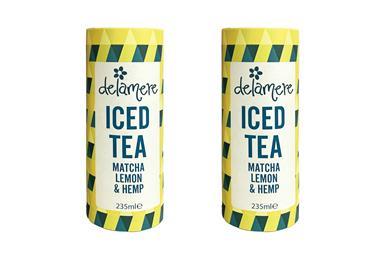
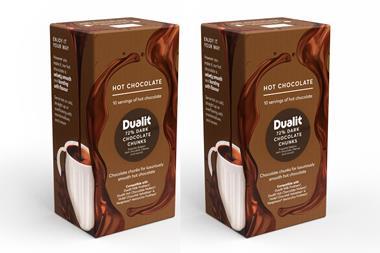



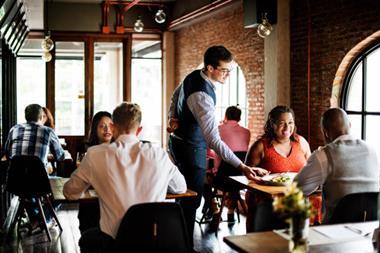
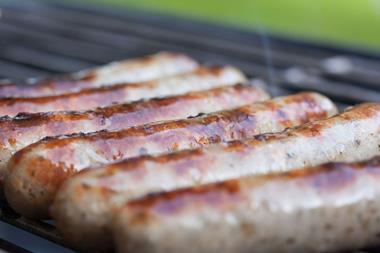
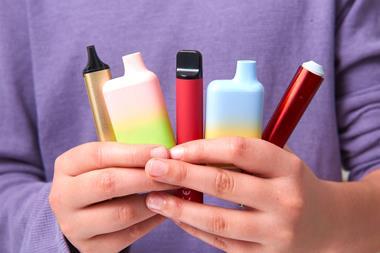
No comments yet